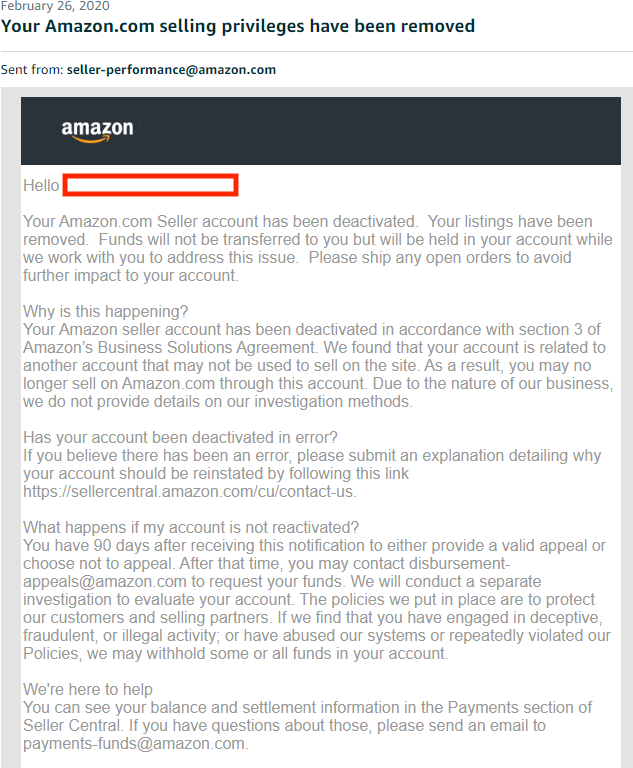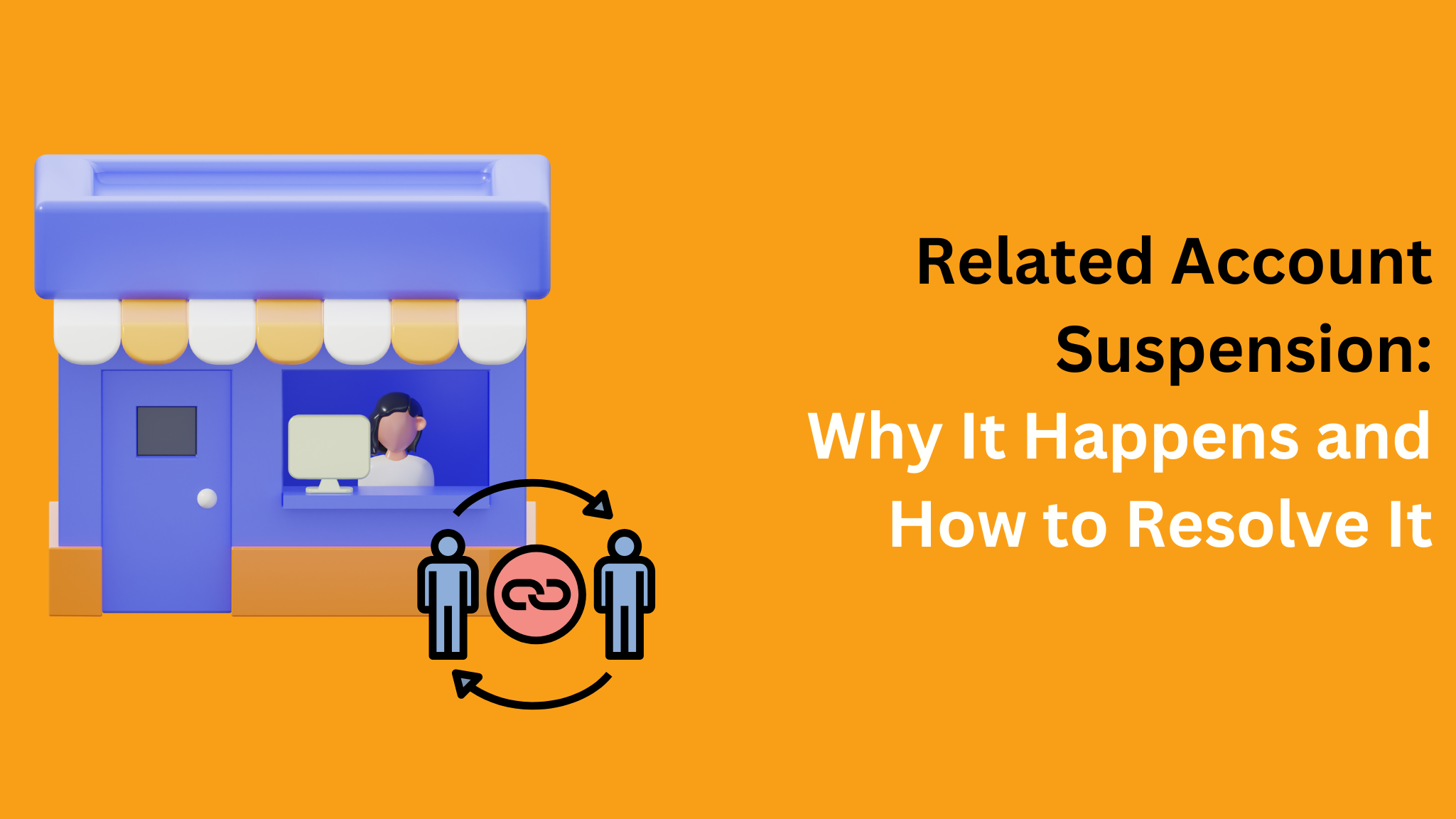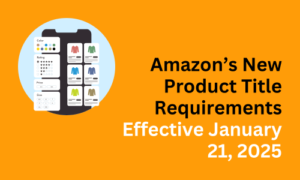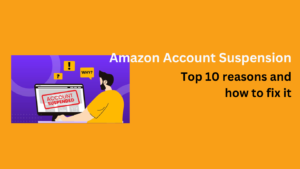Related Account Suspension: Why It Happens and How to Resolve It
Opening a new Amazon Seller Central account is an exciting milestone for entrepreneurs. However, for some sellers, the excitement is short-lived due to unexpected challenges, like a related account suspension. This issue can arise even if you’ve never managed another account before, leaving sellers confused and frustrated. At Active Seller Hub, we specialize in resolving Amazon account suspensions, helping sellers regain access and move forward with their businesses.
In this article, we’ll explore the causes of Amazon related account suspensions, how to prevent them, and the steps to resolve them if you’ve already been suspended.
Why Does Amazon Suspend Accounts for Being “Related”?
Amazon’s systems are designed to protect the integrity of their marketplace. To achieve this, they use robust algorithms that monitor connections between seller accounts, flagging any accounts that appear to be “related.” A related account suspension means Amazon suspects that:
- One individual is managing multiple accounts. Amazon has a strict one-account-per-entity policy to prevent sellers from circumventing restrictions.
- Shared IP addresses or devices were used to access different accounts.
- Overlapping credentials like bank accounts, credit cards, or email addresses were used during account registration.
- Cookies or browser history linked your account to another.
For example, we handled a case where a new seller’s account was flagged and suspended simply because they registered their account using a Wi-Fi network previously used by their friend for an old Amazon account. These seemingly harmless overlaps can trigger Amazon’s detection system and lead to an immediate suspension.

General Causes of Amazon Account Suspensions
While related account suspensions are common, they are not the only reasons Amazon might suspend your account. Other common causes include:
1. Poor Account Health
Failing to meet Amazon’s performance standards, such as:
- High order defect rates
- Late shipment rates
- High pre-fulfillment cancel rates
2. Violating Amazon Policies
Examples include:
- Listing prohibited products
- Misleading product descriptions
- Improper communication with customers
3. Intellectual Property Complaints
Receiving claims of trademark or copyright infringement—whether valid or mistaken—can result in an Amazon suspension.
4. Restricted Product Listings
Selling products that require approval without providing the proper documentation can trigger suspensions.
5. Inauthentic or Safety Complaints
If customers or brands report your products as fake, used, or unsafe, Amazon may suspend your account until the issue is resolved.
Real-Life Experiences of Related Account Suspensions
Many sellers share their frustrations with related account suspensions.
Here are a few examples:
Case 1: A Forgotten Account Causes Immediate Suspension
One of our clients approached us after their brand-new Amazon Seller Central account was suspended just 24 hours after registration. Amazon claimed the account was “related” to another account with unresolved performance issues. The client was initially confused, as they had no active accounts and had never sold on Amazon before.
Through our investigation, we uncovered that the client had created an Amazon account years ago while considering selling online. Although they never used the account, it remained flagged due to an overdue balance and unresolved performance notifications.
Our Approach:
1. Uncovering the Connection: We traced the flagged link to the dormant account and identified the unresolved issues.
2. Addressing the Issues: We helped the client settle the overdue balance and address the performance notifications.
3. Creating a Strong Appeal: We prepared a detailed appeal explaining the situation, with supporting documents like utility bills, proof of unique payment methods, and a clear Plan of Action (POA) to ensure compliance moving forward.
Outcome:
Amazon reinstated the client’s new account after reviewing our appeal. They were able to launch their e-commerce business successfully, free from the baggage of the old account.
Case 2: Shared Network Triggers Suspension
Another client sought our assistance after their account was suspended due to being linked to a relative’s inactive account. Both accounts were flagged as “related” because they were registered using the same home network years apart. While the relative’s account had been inactive for some time, it carried unresolved policy violations, which led Amazon to suspend the new account as well.
Despite submitting appeals independently, the client’s requests were repeatedly rejected. That’s when they turned to us for professional guidance.
Our Approach:
1. Identifying the Root Cause: We reviewed the suspension notice and determined that the shared IP address was the reason for the flagged connection.
2. Establishing Independence: We worked with the client to gather evidence, including utility bills, separate financial statements, and documents showing the unique nature of their business operations.
3. Submitting a Persuasive Appeal: We highlighted the unintentional nature of the shared network issue and provided clear documentation proving there were no operational ties between the two accounts.
Outcome:
Within two weeks, the client’s account was reinstated. They were able to resume their Amazon operations without further interruptions, thanks to our tailored appeal and proactive approach.
Case 3: Shared Device Leads to Unexpected Suspension
One of our clients reached out to us after their Amazon Seller Central account was unexpectedly suspended shortly after registration. Upon investigation, we discovered that the laptop they used to set up their account had previously been used to access a different Amazon Seller Central account. The client had purchased the laptop secondhand and had no knowledge of the prior owner’s Amazon activities. However, Amazon’s system flagged their account due to the shared device history, assuming it was related to the other account.
Our Approach:
1. Identifying the Issue: We traced the flagged connection to the device’s history and explained this to the client.
2. Gathering Evidence: We assisted the client in compiling receipts for the secondhand laptop purchase and statements proving no connection to the other account.
3. Crafting a Detailed Appeal: Our appeal clarified the situation, providing Amazon with the timeline of events, evidence of independence, and steps taken to prevent similar issues in the future.
Outcome:
After multiple follow-ups and persistent communication, Amazon reinstated the account. The client was able to resume their business, now fully aware of the importance of using a fresh, unlinked device for account registration.
This case emphasizes the risks of using secondhand devices and highlights the need to ensure that any hardware used for Amazon account management is free from previous account associations.
Case 4: Public Wi-Fi Network Causes Suspension
In another situation, a client faced suspension shortly after registering their Amazon account using a public Wi-Fi network. Unbeknownst to them, the same network had previously been used by another Amazon seller whose account was suspended. Amazon flagged the new account based on the shared IP address, automatically assuming the two accounts were related.
The client was caught off guard, as they had no connection to the other account and no control over the network’s previous users. Despite submitting an initial appeal, their reinstatement request was denied.
Our Approach:
1. Identifying the Root Cause: We pinpointed the public Wi-Fi network as the source of the flagged connection and explained the technical basis of the issue to the client.
2. Documenting Unique Credentials: We helped the client gather evidence, such as business registration documents, unique payment information, and utility bills, to demonstrate their account’s independence.
3. Submitting a Persuasive Appeal: We prepared a professional appeal that detailed the risks of shared networks and provided proof that the client had no operational ties to the previously suspended account.
How to Avoid Related Account Suspensions
Prevention is the best strategy when it comes to Amazon related account suspensions. Follow these tips to reduce the risk:
1. Use a unique IP address and device
Avoid logging in from a shared or public network. Never use the same computer or mobile device that was previously used for another Seller Central account.
2. Ensure unique credentials
Use an email address, credit card, and bank account that have never been associated with another Amazon account.
3. Clear your browser cookies and cache
Amazon tracks cookies and browser history, so starting fresh during the account creation process is crucial.
4. Avoid shared or VPN networks
While VPNs might seem like a safeguard, Amazon can detect their usage and may flag it as suspicious.
5. Review your personal history
If you’ve ever been involved with another Seller Central account, resolve any unresolved issues before opening a new one.
By following these steps, you can reduce the likelihood of Amazon flagging your account for being related to another.
Resolving a Related Account Suspension
If your account has already been suspended, don’t panic. At Active Seller Hub, we’ve helped countless sellers successfully reinstate their accounts. Here’s the process we recommend:
1. Identify the Connection
Analyze potential links between your account and others. This could include:
- Shared IP addresses
- Overlapping financial information
- Previous accounts associated with your credentials
2. Submit a Persuasive Appeal
Craft a professional appeal addressing Amazon’s concerns and provide clear evidence of your independence from the related account.
3. Provide Strong Documentation
Include proof such as:
- Utility bills showing your address
- Unique payment methods
- Any other documentation that demonstrates your account’s legitimacy
4. Proactive Follow-Up
Persistence is key. Follow up with Amazon regularly to ensure your case receives the attention it deserves.
General Steps to Reactivate a Suspended Amazon Account
For any type of Amazon suspension, follow these steps to increase your chances of reinstatement:
1. Understand the Root Cause
Review the suspension notification carefully to identify the specific reason for the suspension.
2. Gather Supporting Documents
For example:
- Invoices for inventory
- Proof of authenticity
- Compliance certificates
3. Create a Plan of Action (POA)
A strong POA should include:
- Root cause of the suspension
- Actions taken to resolve the issue
- Preventative measures for the future
4. Submit the Appeal
Write a concise, professional appeal and attach all necessary documentation.
5. Be Patient and Persistent
Amazon’s response may require additional clarification or documents. Stay professional and continue to follow up.
Why Choose Active Seller Hub?
Navigating Amazon’s suspension process can be overwhelming. At Active Seller Hub, we specialize in resolving related account suspensions and other account health issues. Here’s what you gain by working with us:
- 👩🏻💻👨💻 A Team of Experts
With years of experience, we’ve resolved countless Amazon account suspensions.
- 🛠️ Custom Solutions
Every case is unique, and we craft tailored strategies for your specific situation.
- 📈 Proven Results
We’ve helped numerous sellers successfully reinstate their accounts and get back to business.











